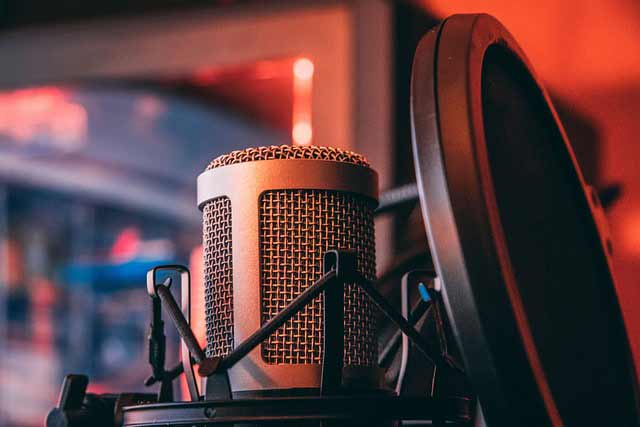So, you've got a brilliant idea for a podcast, and now you want to know how to record it like a pro, right? With the ever-growing popularity of podcasts, there's no better time to dive into this exciting medium.
But with so many podcasts vying for listeners' attention, it's crucial to create content that not only captivates your audience but also stands out from the competition. That's where this guide comes in!
In this article, we'll walk you through nine easy steps that will take you from podcasting novice to seasoned pro in no time.
We'll cover everything from planning your session and inviting engaging guests to setting up your recording space, testing your equipment, and finally publishing your polished episode.
And because we know the tech side of things can be intimidating, we'll also discuss the necessary equipment and software you'll need to get started, as well as some tips and tricks to ensure your podcast stands out from the crowd.
But don't worry, this isn't a dry, technical manual. Whether you're a complete beginner or a seasoned podcaster looking to up your game, you'll find plenty of valuable information to help you on your podcasting journey.
Ready to dive in? Let's get started!
Disclosure: Although I receive affiliate compensation at no additional cost to you to support this site that compensation in no way influences my recommendations, which are strictly informed by my 10+ years of online business experience consulting for clients large and small. My aim is to always recommend tools that offer the best return for your investment (for more details, read my Affiliate Disclosure).
9 Easy Steps to Record a Professional Sounding Podcast
Embarking on a podcasting journey can be both exciting and overwhelming, especially when it comes to ensuring your content sounds professional and engaging.
In this guide, we'll break down the process into nine easy steps to help you record a podcast that captivates your audience and stands out in the ever-growing sea of content.
From planning and guest selection to recording and publishing, we've got you covered with practical tips and insights for every stage of the podcasting process:
Step 1. Plan Your Session

A successful podcast begins with a well-thought-out plan. To create a captivating listening experience, start by determining your podcast's topic and format.
Choose something you're passionate about and decide on an engaging format, such as interviews, storytelling, or panel discussions.
Next, set goals and objectives for each episode, ensuring they inform, entertain, or inspire your audience.
Outline the episode structure by breaking your content into segments to create a logical flow and keep your audience engaged.
Establish a realistic time frame for the episode, considering the length of the content and the attention span of your audience.
Finally, prepare any materials you need, like slides, images, or videos, to support your content.
Step 2. Invite Your Guests
Guest selection is a critical aspect of podcast production that can elevate the quality of your content. Start by identifying potential guests who are interesting and knowledgeable in your field and can offer unique insights.
Reach out to potential guests via email or social media, explaining why you think they'd be a great fit for your podcast.
Confirm the date and time of the recording session and ensure that your guests have all the necessary information.
Prepare and share guest guidelines, providing information on the podcast format, topics to be covered, and any other expectations.
Encourage your guests to prepare any materials or talking points they want to discuss during the episode, and test the audio and video quality with your guests before the recording session to avoid any technical difficulties.
Step 3. Script Your Episode
Creating a compelling script is key to a smooth and engaging podcast episode.
Start by developing a clear and concise script, writing down key points and questions you want to cover--however, avoid reading it word-for-word to maintain a conversational tone.
Include engaging segments to mix things up, such as listener questions or fun facts.
Break up the text using bullet points or subheadings to improve readability.
Lastly, include cues for any sound effects or music you plan to use to enhance your episode.
Step 4. Set Up Your Space with the Right Equipment and Sound-Proofing

The quality of your recording space and equipment can significantly impact your podcast's audio quality, so begin by choosing a quiet and comfortable room with minimal background noise.
Utilize soundproofing materials like acoustic panels or blankets to reduce echoes and reverberations.
Invest in a high-quality microphone, headphones, and mixer to ensure clear and crisp audio.
Step 5. Audio and Video Testing
Technical excellence is vital for a professional podcast. To ensure you have everything in place to capture high-quality audio and video, start by testing your equipment for optimal sound quality.
Adjust settings on your microphone and recording software to achieve the best audio possible.
If you're filming your podcast, check your camera setup and lighting to make sure everything looks great.
Perform a test recording, capturing a short sample to ensure everything is working properly before you begin the actual recording session.
Step 6. Record Your Podcast
With the groundwork laid, it's time to bring your podcast to life. During the recording process, use best practices for capturing audio:
Speak clearly and consistently, maintaining a proper distance from the microphone.
Capture clean and clear sound by minimizing background noise and distractions during recording.
Monitor the recording process closely, keeping an eye (and ear) on your audio levels and making adjustments as needed.
Step 7. Edit Your Audio and Video

Editing is where the magic happens--turning raw content into a polished final product.
Start by choosing suitable editing software, such as Audacity for audio and Adobe Premiere Pro for video.
Clean up your audio by using noise reduction tools and editing out any mistakes or awkward pauses.
If you're editing video footage, trim your clips, add transitions, and adjust color settings for a polished final product.
Remember to strike a balance between perfection and authenticity, as small imperfections can make your podcast feel more genuine and relatable.
Step 8. Transcribe Your Podcast
Adding transcriptions to your podcast offers valuable benefits for accessibility and discoverability.
To create a transcript, use transcription software or services like Otter.ai or Rev.com, which can help generate accurate transcriptions.
Once you have the initial transcript, edit and proofread it to ensure it's error-free and matches the audio content.
Consider the SEO and accessibility benefits of providing transcriptions, as they can improve your podcast's search rankings and make it more accessible to a wider audience, including those with hearing impairments or non-native English speakers.
Step 9. Publish Your Episode
The culmination of your hard work is finally here--publishing your podcast episode.
Begin by selecting a podcast hosting platform, such as Libsyn, Podbean, or Anchor, which will store and distribute your podcast files.
Optimize your episode's metadata by writing engaging titles and descriptions, and including relevant keywords for better discoverability.
Finally, promote your podcast through various channels, such as social media, your website, and relevant online communities.
Engage with your audience and encourage feedback to continuously improve your podcast, fostering a loyal listener base and attracting new fans.
In Conclusion
Creating a professional sounding podcast might seem like a daunting task, but with these nine easy steps, you're well-equipped to tackle the challenge.
As you embark on this podcasting journey, remember that persistence and passion are key.
It may take time to build a loyal following, but with dedication and hard work, you can create a standout podcast that resonates with your target audience.
Now that you're armed with the knowledge and tools to record a professional sounding podcast, it's time to take the plunge and bring your unique voice to the world of podcasting.
Best of luck!







